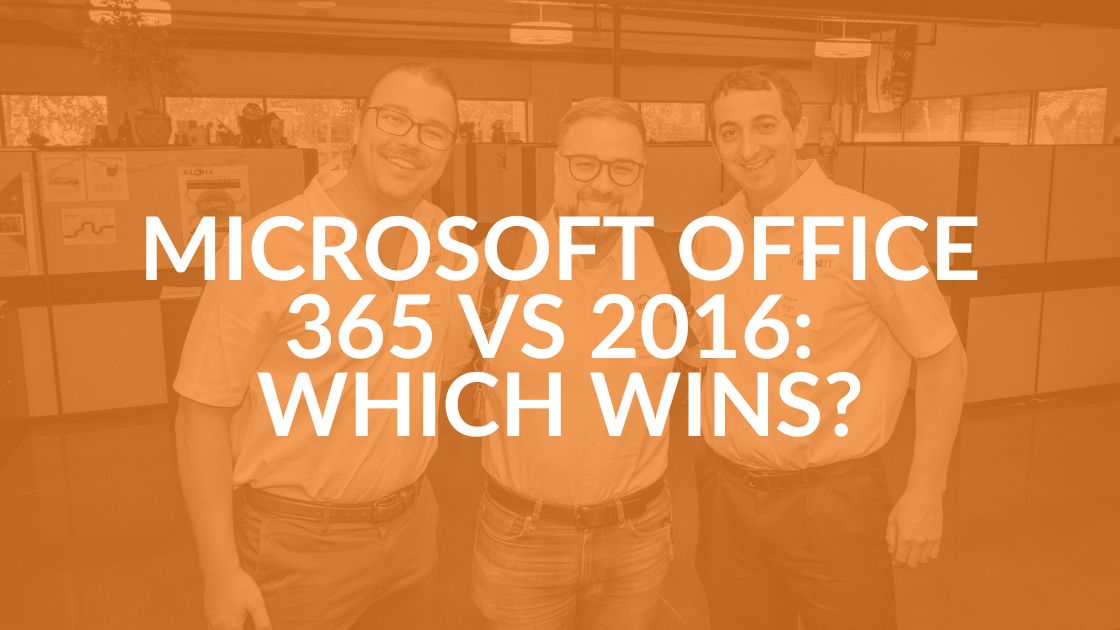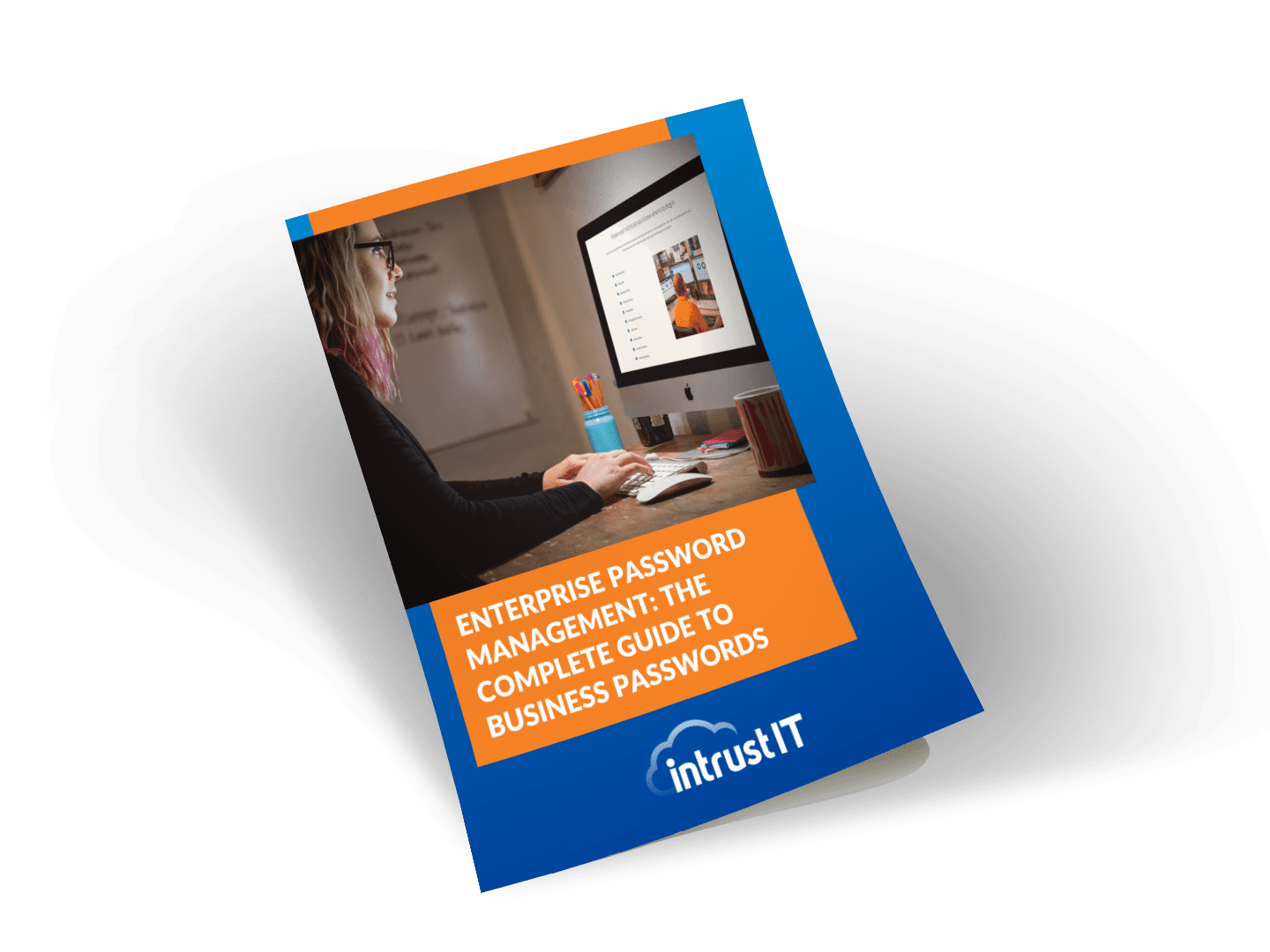Microsoft Office 365 vs 2016: Which Wins?

When it comes to comparing Microsoft Office 365 vs 2016, we understand how overwhelming the choices can be for your business. At Intrust IT, we’re your trusted managed IT and Microsoft 365 support partner, and we’re here to simplify this decision-making process for you based on our years of experience.
Microsoft Office 365 vs 2016: Key Distinctions
First, let’s understand the key differences between these two options. Office 2016 is a version of the Office suite primarily accessible through your desktop. On the other hand, Microsoft Office 365 takes a cloud-based subscription approach, bundling Office 2016 with a comprehensive array of other software.
With Microsoft 365, you can choose to have Office 2016 as a standalone product or as part of your Microsoft 365 subscription.
For those considering a standalone Office 2016 solution, there are two versions available for businesses:
- Office Home & Business 2016: This package includes Word, Excel, PowerPoint, OneNote and Outlook. It’s priced at $229.99 for 1 PC (or Mac users can select Office Home & Business 2016 for Mac).
- Office Professional 2016: In addition to Home & Business, this version offers Publisher and Access, available for $399.99 for 1 PC (please note it’s not compatible with Mac).
Standalone Office 2016 or an Office 365 Plan?
Choosing standalone Office 2016 versions gives you the ability to save files to the cloud, making collaboration easier, especially for teams working across different locations. On the other hand, integrating Office 2016 within a Microsoft 365 plan unlocks a multitude of tailored benefits and features designed to cater to your unique requirements.
All Microsoft 365 plans provide:
- Online editions of Office apps (Word, PowerPoint, Excel).
- A generous 1 TB per user of file storage and sharing through OneDrive.
- A robust 99 percent uptime guarantee.
- Top-tier data security measures.
- Seamless Active Directory integration for streamlined user permissions.
As you explore Microsoft 365 plans, you gain access to additional features such as:
- Full desktop versions of Office apps across up to five computers per user.
- Office compatibility with tablet and mobile devices (regardless of the operating system).
- Outlook with 50 GB of inbox space per user.
- Customizable intranet capabilities through SharePoint.
- A versatile corporate social networking platform via Yammer.
- Compliance protection featuring encrypted email and data loss prevention.
- Skype for Business instant messaging, which can also serve as your phone system.
Narrowing Down the Ideal Choice for Your Business
To make an informed decision on Microsoft Office 365 vs. 2016, consider the following factors:
- Desired programs and features: Assess your needs and priorities. If basic Office applications like Word, PowerPoint and Excel are sufficient, either a standalone Office 2016 version or a lower-tier Microsoft 365 plan should work.
However, if advanced features or access to programs like SharePoint are crucial, Microsoft 365 might be the better choice. Microsoft 365’s subscription model provides access to new features as they debut, ensuring continuous updates and enhancements.
Need a custom-tailored solution? Consider our custom IT projects. - Accessibility: If the ability to access your data across multiple devices is important for your workflow, Microsoft 365 is the preferred option. While Office 2016 allows cloud file saving, 365 offers a broader spectrum of access options and permits installations across multiple machines.
Moreover, online versions of Office apps can be accessed from any device connected to the internet, enhancing your productivity and flexibility. - Ease of plan migration: Think about potential plan upgrades. With Office 2016 as standalone software, upgrading and incorporating new features requires purchasing and installing fresh licenses for all users.
In contrast, Microsoft 365 users enjoy the convenience of seamless plan transitions via the admin center, providing scalability and adaptability in response to evolving business demands. - Financial considerations: Evaluate your budget and payment preferences. Office 2016 involves a one-time cost per user, requiring a larger upfront investment. After the initial payment, no further monthly charges apply.
On the other hand, Microsoft 365 adopts a subscription model, which means no upfront expense, but you commit to a fixed monthly fee per user. If avoiding significant initial investments appeals to you or if continuous updates and feature access align with your goals, Microsoft 365 is the more suitable choice.
And, if you have any questions about our pricing, take a look at our IT service packages page.
Microsoft Office 365 vs 2016? Simplifying Your Choices
At Intrust IT, we’re here to support your business growth and help you navigate the nuanced terrain of the Microsoft Office 365 vs 2016 debate. Whether you’re ready to embrace the transition to Microsoft 365 or want to explore other ways we can enhance your business operations, like through our IT support services, we’re here for you. Contact us or book a meeting with our team of experts. In the meantime, if you want to learn more about making the most of Microsoft 365, check out our Microsoft 365 Tips and Tricks blog post.
Share this Blog

Is Your Name or Birthday a Part of Your Password?
If so, you’re a part of the 59 percent of people who don’t follow proper password hygiene. More than 70 percent of passwords are used for more than one system, meaning if cybercriminals crack one, they can access a lot more accounts.
Our free Enterprise Password Management Guide will give you the best password hygiene practices to help you secure your computer and your business.
Download the Guide
Explore the Latest Trends in IT

Securing Our Cities: Cybersecurity Protection for Local Governments

Manufacturing and IoT: Securing Connected Devices

Small Business Cyber Security Toolkit: The Tools You Need to Stay Protected




